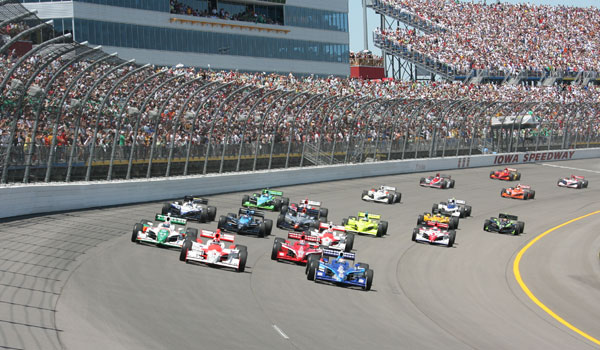The Indianapolis Motor Speedway Tweaks Its Audio Engines Ahead of Race Day
New speakers, latency improvement are part of this year’s effort in updating the sound system
Story Highlights
Like painting the Golden Gate Bridge or the Eiffel Tower, sprucing up the Indianapolis Motor Speedway’s (IMS) sound system is an almost Sisyphean task. Each year, the team assembled by RaceTrack Engineering (RTE) to update and renovate the sprawling sound system covering the track has edged forward, a section at a time. This year, with all the hundreds of loudspeakers finally replaced or updated, the venue is already giving thought to what to replace the system’s network with next year.
 “The QSControl system we installed in 2003 is no longer supported; we’ve been using used components because they’re not making spares for it anymore,” observes Dave Dusick, founder of the company, which provides audio, video, RF, and display and messaging systems and services to IMS and other motorsports venues. “When we installed networked audio here in 2003, it was still in its infancy. Now we’re looking at what we’ll need to update that for next year.”
“The QSControl system we installed in 2003 is no longer supported; we’ve been using used components because they’re not making spares for it anymore,” observes Dave Dusick, founder of the company, which provides audio, video, RF, and display and messaging systems and services to IMS and other motorsports venues. “When we installed networked audio here in 2003, it was still in its infancy. Now we’re looking at what we’ll need to update that for next year.”
That’s even as RTE was putting the finishing touches on this year’s updates to the Indy track’s sound. Those included 150 new Community R.5 speakers powered by six 10,000-W Crown monoblock amplifiers and managed via a Symetrix Jupiter 8X8 processor. These replace ancient Atlas horns installed before 1970 and completely renovate the infield sound system. Also replaced this year were the woofers on all 330 QSC speakers used to cover the outfield. Those were installed to be ready for the 2003 race season, and Dusick says that, although they’ve held up well, recent weather issues had degraded the main-speaker components enough to warrant replacement.
Sync In
Another concern faced this year was a latency problem between the sound systems and the 18 videoboards around the venue. The distances between the screens and the areas of the grandstand they’re meant to cover vary considerably from section to section. For instance, the corners can be 1,200 ft. from viewers, while the straightaway stretches are as close as 200 ft. In addition, the screens are of different sizes and pixel pitches, which require different amounts of DSP.
As a result, the latency disparity between the live sound and the picture could be as much as 500-700 ms., enough to be annoyingly noticeable especially during music performances. (Among other artists, the Steve Miller Band is scheduled to perform during Indy Week’s Miller Lite Carb Day celebration today.)
“It’s unusual to have such a difference in screen sizes and types in a single venue — most stadiums will have one or two big screens, not 18 — and the latency was different between most of them,” says Dusick, “so the sync with audio had been challenging.”
The issue has been resolved. According to Phil Goll, creative director at Hindsight Productions, which is managing the video displays for Panasonic Enterprise Solutions, the dissimilar resolution values for the video challenged the video-processing bandwidth. One of the four Viz Artist broadcast graphics systems had to be dedicated just to scaling.
“We restructured how the graphics are being processed and sent to the switcher; that reduced the latency by half,” he explains. “Then we changed how the video layer was being read by the Viz Artist, which then brought the latency down to almost zero.”
Showing Its Age
Steve Durr, the acoustics and audio consultant Dusick brought in a decade ago to oversee audio-system renovation, points out that the expansion of music performances at the event in recent years revealed the sound systems’ age.
“It’s just recently, relatively speaking, that they’ve had live music performances for the race, and that’s when the sound system needed to become full range,” he explains. “We’ve been getting there slowly, improving the systems year after year. And, every year, there’s something new to look at.”
At the same time, Durr points out, the live music productions have become more complex. This year, there will be four fixed performance stages and one rolling stage, on which performers will play one song at each of the track’s turns. There will be a wired link from the stage to an input point in the system at each stop, through which the performance will be routed into the PA systems.
“The entertainment component of the show gets bigger and more complex every year,” says Durr. “And we’re trying to keep up with it,” with what he estimates is the largest PA system into the world, in terms of area covered.
Adds Dusick, “The only thing straightforward about all this is 5/8ths of a mile of straightaway on the track.”
